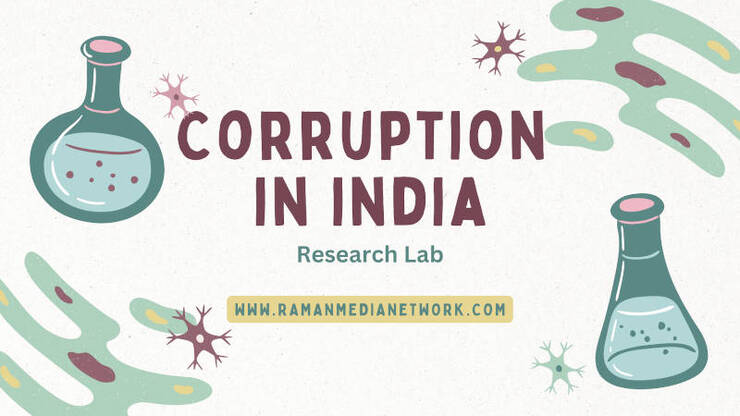Transparency Index Reveals Corruption Increasing in India
The CPI rank of India has been constantly falling from 85 in 2022 to 93 in 2023 to 96 in 2024, which indicates that corruption has been increasing exponentially in the country.
By Rakesh Raman
Transparency International’s Corruption Perceptions Index (CPI) 2024 – released in February 2025 – shows that corruption has been increasing in India, as the country of 1.4 billion people saw a drop in its ranking to 96th position from 93rd last year.
With a score of 38 out of 100, India is among the world’s most corrupt countries while the CPI evaluates 180 countries and territories, assigning scores from 0 (highly corrupt) to 100 (very clean).
The Transparency Index asserts that corruption is increasing in repressive authoritarian nations where elections are not fair and transparent and where democratic institutions are under a constant assault by the ruling regime.
Full democracies have a CPI average of 73, while flawed democracies average 47 and non-democratic regimes just 33. It shows that India with a score of 38 is a non-democratic nation. The Index also shows that corruption is more in India than China which has a CPI rank of 76.
The CPI rank of India has been constantly falling from 85 in 2022 to 93 in 2023 to 96 in 2024, which indicates that corruption has been increasing exponentially in the country – particularly under the regime of prime minister (PM) Narendra Modi.
In order to stop corruption, the Supreme Court of India asked the government to set up the office of Lokpal, the top anti-corruption ombudsman in India. Although the Lokpal was established in March 2019, let alone resolving corruption cases, it could not formalize its processes in five years of its formation. Corruption is still increasing rapidly in different forms.
While political, bureaucratic, and judicial corruption has become a pain in the neck for commoners in India, there is no effective agency which can give relief from corruption to the suffering citizens. The Lokayukta (anti-corruption ombudsman organization in the Indian States), vigilance departments of State governments, and India’s top anti-corruption organization Central Vigilance Commission (CVC) are all toothless outfits that tend to protect the corrupt officials and encourage corruption.
They simply turn a blind eye to the corruption cases in which government politicians and working bureaucrats are involved. The procedures of anti-corruption agencies to accept public complaints on corruption are so slow and cumbersome that ordinary citizens feel scared to file their complaints against corrupt officials.
The public grievance monitoring systems of the State as well as Central governments are also totally ineffective. After receiving complaints from the citizens, these systems send them to some random departments in a mechanical way and abruptly close the cases without giving relief to the complainants.
Government officials keep throwing public complaints from one desk to another without taking conclusive decisions on the complaints. Finally, the aggrieved citizens are left with no other option but to approach the courts. But if courts have to do everything, why do we need politicians and government officials? The administrative systems have totally collapsed in India.
While corruption is happening openly, most corruption cases involving top bureaucrats and ruling politicians do not get reported. As most Indian journalists are corrupt, Indian media is under the tight control of the government. When some corruption cases appear in the non-traditional media (such as news sites), the government ignores them and makes false claims that no corruption is happening under the government. The truth, however, is that corruption – which has been persisting for decades under all governments – is happening and increasing at every step in the country.
Although a slew of anti-corruption laws exist in India, the rising corruption in the country indicates that these laws are not effective. The anti-corruption laws that are supposed to check corruption include Indian Penal Code, 1860; Prevention of Corruption Act, 1988; Benami Transactions (Prohibition) Act, 1988 to prohibit benami transactions; Prevention of Money Laundering Act, 2002; among others.
Since government politicians are mostly illiterate or inexperienced, they are heavily dependent on bureaucrats for all clerical work. While the unskilled bureaucrats are not able to complete their tasks effectively, on average almost 10 bureaucrats are paid for work that can be done by a single person.
Thus, salaries being given to bureaucrats with public money is a form of corruption to loot the government exchequer. It is estimated that a whopping 10% of India’s GDP is wasted on salaries of government employees while they do not deserve even a fraction of this money.
The India Corruption Research Report 2024 discusses various factors related to corruption in India. It also gives recommendations to stop corruption in the country. You can click here to download and study the report.
By Rakesh Raman, who is a national award-winning journalist and social activist. He is the founder of a humanitarian organization RMN Foundation which is working in diverse areas to help the disadvantaged and distressed people in the society.












